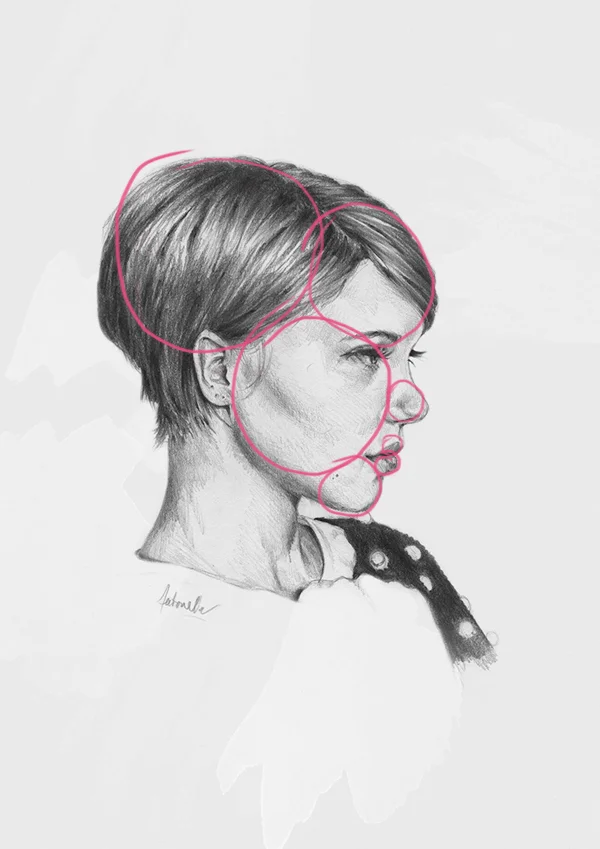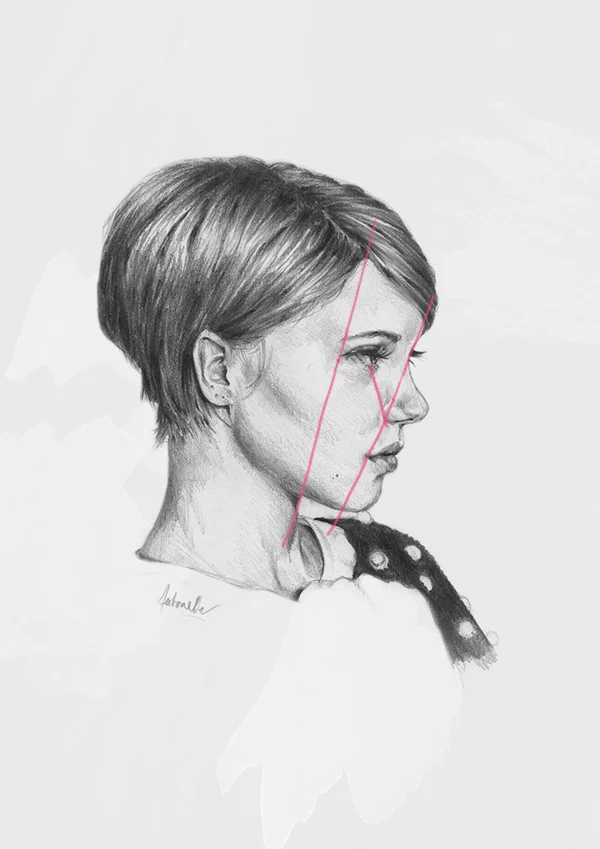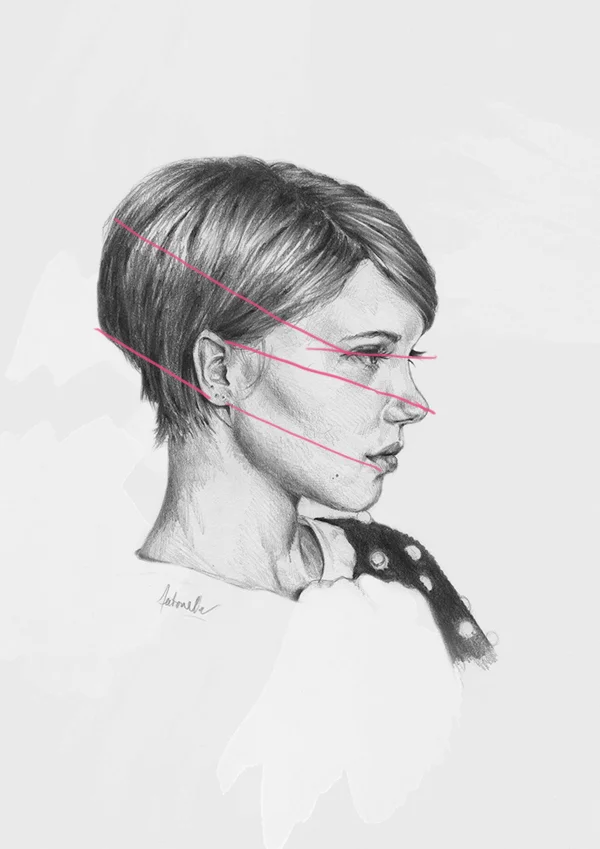Learn to Sketch Better Portraits With Just 3 Simple Tips: Following these straightforward tips to make drawing faces less intimidating and more enjoyable!
Portrait of French actress Léa Seydoux by Antonella Avogadro
Sketch Simplify by using shapes

Firstly, the most useful technique to get started and past the initial fear is to simplify the major shapes of the face.
If you are drawing from an image, then you can even draw the shapes on your reference photo before you draw them on your paper. This will help you get a good understanding of proportions and the distances between features.
The most common shapes used to break up the face are circles and triangles, but you can use whichever shape comes closest to the elements in your reference. Look at your image — or live subject if you are drawing from life — and try to find the underlying shapes that create the structure of the face and skull.
Analyze the way the features align

When drawing it, is easy to let your brain take charge and begin to draw what we think is there instead of going with a full observation approach and drawing what we actually see. One way to overcome this problem is to draw lines in order to analyze how the features align on the face. Using this technique will help you learn how things like the eyes, hairline, nose, ears, cheekbones, etc. interact with each other.
Draw vertical and diagonal lines to get a sense of how the placement of the nose relates to the placement of the mouth, and chin; how the corner of the eye interacts with the neck and jawline; or the relationship between the eye and the edge of the nose.
Use lines to measure distances

This tip is closely related to the previous one. We are still drawing lines over our reference image, but this time their purpose is to measure distances.
Sketching the features of a face at the correct distance from each other is very important to achieve likeness. Some people have eyes that are closer together, others are wider apart, some have longer noses and others shorter ones. All of these details make up the person as a whole and define their individual and characteristic look. When you get the size and distance of the features right, a face becomes instantly recognizable and can come alive on the page.
All of these tips are aimed at improving and refining our observational skills and analyzing the individual and unique proportions of the person we are sketching. Give them a try and see how, after just a couple of attempts, you will start to notice improvement with the ever new sketch you create.
This is tremendously encouraging, to witness as we slowly improve our skills and get better right before our very eyes. After all, that’s what practice is all about, nothing but a beautiful journey of discovering how much we are capable of.

Gary Faigin, the Craftsy instructor, said that drawing portraits are one of the most magical things there is because, by using the simplest of tools on a blank piece of paper, a person suddenly appears on it. I could not agree more, and I think he put into words exactly what the amazing beauty of the portraiture experience is all about.
Learn also:
- How to Draw Anime Anatomy, Easy Tutorial, 25 Steps
- How to Draw Female Figures, Draw Female Bodies, 21 Steps





